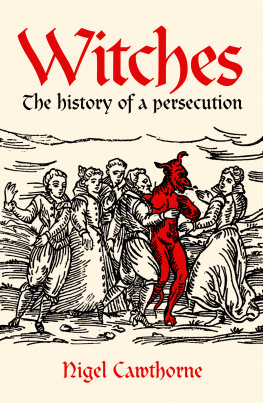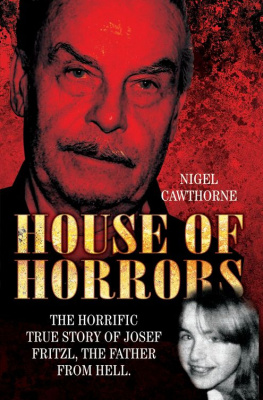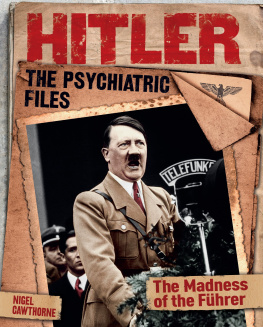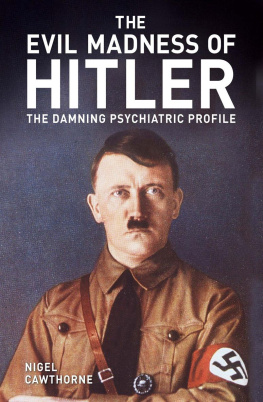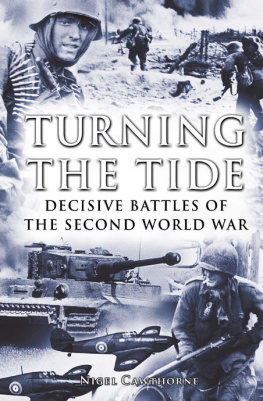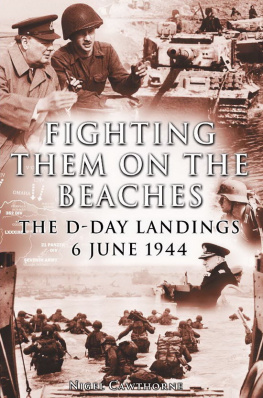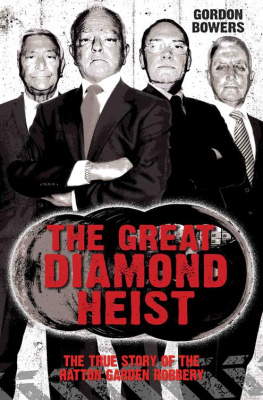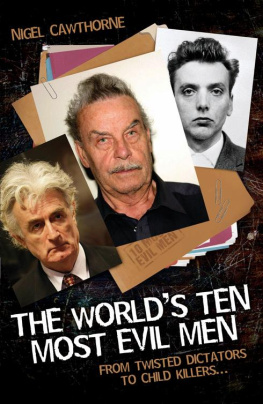Nigel Cawthorne - The Bamboo Cage: The True Story of American P.O.W.s in Vietnam
Here you can read online Nigel Cawthorne - The Bamboo Cage: The True Story of American P.O.W.s in Vietnam full text of the book (entire story) in english for free. Download pdf and epub, get meaning, cover and reviews about this ebook. year: 2013, publisher: Garrett County Press, genre: History. Description of the work, (preface) as well as reviews are available. Best literature library LitArk.com created for fans of good reading and offers a wide selection of genres:
Romance novel
Science fiction
Adventure
Detective
Science
History
Home and family
Prose
Art
Politics
Computer
Non-fiction
Religion
Business
Children
Humor
Choose a favorite category and find really read worthwhile books. Enjoy immersion in the world of imagination, feel the emotions of the characters or learn something new for yourself, make an fascinating discovery.

- Book:The Bamboo Cage: The True Story of American P.O.W.s in Vietnam
- Author:
- Publisher:Garrett County Press
- Genre:
- Year:2013
- Rating:3 / 5
- Favourites:Add to favourites
- Your mark:
- 60
- 1
- 2
- 3
- 4
- 5
The Bamboo Cage: The True Story of American P.O.W.s in Vietnam: summary, description and annotation
We offer to read an annotation, description, summary or preface (depends on what the author of the book "The Bamboo Cage: The True Story of American P.O.W.s in Vietnam" wrote himself). If you haven't found the necessary information about the book — write in the comments, we will try to find it.
After the Vietnam War ground to a bloody halt, long after the boys were officially sent home, evidence remained that over 2,000 American soldiers were still missing in Southeast Asia. In this shocking expose, journalist Nigel Cawthorne examines the evidence from CIA documents and Pentagon files to the streets of Hanoi.
The Bamboo Cage: The True Story of American P.O.W.s in Vietnam — read online for free the complete book (whole text) full work
Below is the text of the book, divided by pages. System saving the place of the last page read, allows you to conveniently read the book "The Bamboo Cage: The True Story of American P.O.W.s in Vietnam" online for free, without having to search again every time where you left off. Put a bookmark, and you can go to the page where you finished reading at any time.
Font size:
Interval:
Bookmark:
THE MISFORTUNES OF WAR
The American psyche never suffered such a bitter blow as defeat in Vietnam. America had never lost a war before. Hollywood and the Constitution told all Americans that they were the Good Guys, on the side of peace and freedom, always holding out a helping hand to the little guy. But in 1965 America found itself embroiled in a conflict that cast it as the villain in the eyes of the world and in the eyes of half its citizens. Instead of the laconic marshal riding in to clean up a frontier town, America was suddenly a power-mad bully, armed to the teeth, kicking the shit out of a nation of unarmed peasants.
As far as the Vietnamese were concerned though, the war started in 1930 when a violent insurrection against their colonial masters, the French, was brutally repressed. But members of the newly formed Communist Party managed to escape. Their leader, the self-styled Ho Chi Minhwhich means, He who enlightensreturned in 1945, with American backing, to liberate Hanoi from the Japanese and declare Vietnam an independent nation.
France refused to accept this, as did the British who held Saigon after the fall of Japan. Seeking to legitimize their own recolonization of Burma, Malaya and Singapore, the British rearmed the Japanese to keep the Vietnamese nationalists, the Viet Minh, at bay. Push came to shove. The Viet Minh attacked, seizing a hundred hostages.
Talks were forced. Ho Chi Minh visited France for a conference which aimed to make Vietnam a free state within the French Union. This was concluded to the satisfaction of neither side.
Soon after Hos return to Hanoi, it was plain that the fragile peace could not hold. Skirmishes broke out between French and Viet Minh forces in the port of Haiphong. A French cruiser shelled the city and the First Indochina War was under way.
The Viet Minh, under General Vo Nguyen Giap, withdrew to the countryside and began a campaign that culminated in the defeat of the French in a bloody, muddy, First World War-style battle at Dien Bien Phu on 7 May, 1954. Peace accords were drawn up in Geneva where the Viet Minh were represented by Hos longtime right-hand man, Pham Van Dong. The country was to be temporarily divided into two administrative regions separated by a demilitarized zonethe DMZalong the 17th parallel. The Viet Minh would administer the north while the French, through Vietnams last emperor Bao Dai, would administer the south, until elections could be called to unite the country. These, it was felt, would be a walkover for Ho Chi Minh.
However, by this time America had become terrified of global communist expansion. Since the end of World War II America had seen most of Eastern Europe fall to communism. In 1949 China fell. The communists had also tried to overrun South Korea, the Philippines and Malaya. There was no way America was going to stand by and see South Vietnam go communist. So America, who was also a signatory to the Geneva Peace Accords, and South Vietnam continually postponed elections on the grounds that communist intimidation made free and fair elections impossible.
In 1955 Bao Dai was defeated in a referendum by his Prime Minister, Ngo Dinh Diem, who, with American backing, declared South Vietnam a republic and himself president. Former Viet Minh nationalists in the South formed the National Liberation Front, or Viet Cong, to oppose the permanent partition of the country and the North Vietnamese began infiltrating men and supplies into the South to aid the fighting. To counter this, the US Special Forces began training the South Vietnamese ARVNthe Army of the Republic of Viet Nam.
The Cuban missile crisis of 1961 scared the hell out of America and the world. For a week America and the Soviet Union stood on the brink of all-out nuclear war. President Kennedy vowed that such a dangerous confrontation must never happen again. But he was a realist. He knew that conflict between the western democracies and the communist world was inevitable. But instead of eyeball-to-eyeball confrontation, he decided that it would be safer for all concerned if there were to be small, surrogate, safety-valve wars in Third World countries. Vietnam just happened to be it.
Military aid and US advisers poured in. The Saigon regime quickly became corrupted by the massive sums of American aid they had to handle. Diem was assassinated and replaced by President Minh, then President Thieu, another American surrogate. Meanwhile, the Americans were losing more and more advisers as the war in the paddy fields hotted up.
In August, 1964, it was reported, falsely, that there had been a second attack on the US destroyer Maddox by North Vietnamese patrol boats. President Johnson authorized the bombing of North Vietnam and Congress passed the Gulf of Tonkin Resolution which gave the President the power and the money to wage war in South-East Asia.
On 8 March, 1965, US Marines waded ashore on the beaches at Da Nang. It was pure showmanship. They were greeted by schoolgirls carrying garlands of dahlias and gladioli and the mayor of Da Nang with his new Polaroid camera. Other US troops landed discreetly at the airport or stepped ashore from ships at Da Nangs deep-water harbour.
Mighty America thought the war in Vietnam would be a pushover. Their massive resources were pitted against one of the worlds smallest, poorest and most backward nations. But they totally misjudged the situation. They were fighting a tenacious enemy who had been battle-hardened by years of fighting. The Viet Cong could blend in with the populace like tears in a bucket of water. They could live in tunnels underground for years on end. They knew the jungle terrain and could march all day on a handful of rice.
American Defense Secretary Robert McNamara soon realized that America could not win. Educated at the Harvard Business School, all he had to do were his sums. It was plain that, in this type of guerrilla warfare, the communists could limit the scope and frequency of the engagements. That meant they controlled the number of casualties. All they had to do was keep their losses down to below the birth rate and they could go on fighting forever. Sooner or later America would get fed up and go home.
The Australians had had a presence in South Vietnam since 1962, but, in an effort to make the war seem more like an allied effort, President Johnson put pressure on New Zealand, the Philippines, Taiwan, Thailand and South Korea, who all sent troops. Germany and Spain sent medical teams. Meanwhile, the North was being aided by the Russians, the Chinese and even a few Cuban advisers.
In January, 1968, the Viet Cong threw themselves against the Americans, overrunning much of the country in the Tet Offensive, while the North Vietnamese Army besieged the US Marines at Khe Sanh. Though the Viet Cong were quickly beaten, the damage had been done. American TV viewers had seen the US Embassy compound in Saigon occupied by communist guerrillas. If America could not hold that, what hope was there? Veteran TV news anchorman Walter Cronkite, who until then had supported the war, changed his mind. He now said the war was unwinnable and half the country changed their minds with him. Cursing Cronkite, President Johnson declared that he would not run for a second elected term, replaced his commander in the field, General Westmoreland, and started peace talks in Paris. They were to last five years.
In May, 1968, in the so-called Mini-Tet, the Viet Cong threw themselves against the Americans again. VC losses in Tet and Mini-Tet essentially finished them off as a fighting force. From then on, the war in the South was largely conducted by North Vietnamese regulars infiltrated down the Ho Chi Minh trail which ran from the railheads in the North, down through neutral Laos and Cambodia into South Vietnam.
America was, by this time, split down the middle over the war. Martin Luther King had condemned it. Blacks found themselves unfairly committed as frontline troops while their militant brothers at home told them that they should be killing their real enemy, the white man, not yellow ones. Protestors took to the streets. Young men burnt their draft cards. Blacks burnt the ghettos. Rich kids stayed on in college or bought a medical deferment from a sympathetic family doctor. The poor fled to Canada or Sweden, or resigned themselves to becoming cannon fodder.
Font size:
Interval:
Bookmark:
Similar books «The Bamboo Cage: The True Story of American P.O.W.s in Vietnam»
Look at similar books to The Bamboo Cage: The True Story of American P.O.W.s in Vietnam. We have selected literature similar in name and meaning in the hope of providing readers with more options to find new, interesting, not yet read works.
Discussion, reviews of the book The Bamboo Cage: The True Story of American P.O.W.s in Vietnam and just readers' own opinions. Leave your comments, write what you think about the work, its meaning or the main characters. Specify what exactly you liked and what you didn't like, and why you think so.


